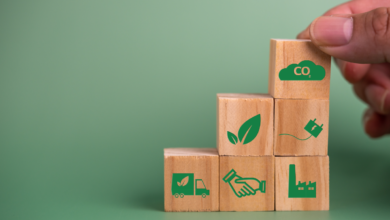
All decisions taken by the COP28 in Dubai on climate finance
– COP28 has decided the transition from fossil fuels. But with what money can the world say goodbye to coal, oil and gas? Without climate finance, the transition will remain stranded: it is like having a car that lacks wheels. For this reason, the topic of climate finance has accompanied much of the discussions at the Dubai conference. With few concrete results – the approval of the Loss and Damage Fund (Loss & Damage Fund) already during the 1st plenary session on 30 November – but much important work behind the scenes.
What are we talking about, exactly, when we talk about climate finance? The COP process is addressing this issue in different ways:
- the target of USD 100 billion per year by 2020 and up to 2025;
- the post-2025 climate finance target, also called the New Collective Quantified Goal (NCQG);
- the repair mechanism for losses and damage caused by the climate crisis to the most vulnerable countries;
- the architecture and rules of long-term climate finance, including the precise definition of climate finance;
- the mobilization of financial flows from private and through the major multilateral institutions, the multilateral development banks (such as the World Bank, the Asian Development Bank, the African Development Bank, the Inter-American Development Bank or the European Bank for Reconstruction and Development).
2020 climate finance target
Part of the discussion at COP28 in Dubai focused on the target of USD 100 billion a year that the richest countries should reach by 2020, and secure until 2025, as set in 2009 at COP15 in Copenhagen. Most of these flows take the form of development aid, either as non-repayable aid or, more often, as loans.
The volume of finance mobilized that year was far from 100. According to the most recent OECD estimate, “probably” the goal was finally reached in 2022. But the final document of the COP28 on long-term finance, which takes stock of the target of $ 100 billion, notes that there are several estimates of this.
read also COP28 climate summit: where are we on the farewell to fossils?
In addition to that of the OECD are those provided by individual donor countries (which tend to inflate their contributions) and that elaborated by Oxfam, which does not count much of the finance in the form of loans. According to the latest “shadow report” by the NGO, published this year, in 2020, real climate finance amounted to just $21-24.5 billion, while OECD estimates set it at $83.3 billion.
Why these differences? The reason is that there is no formal and shared definition of climate finance, what forms of finance can be used (grant/loan), and what kind of projects can be directed towards. Today the climate finance landscape is the wild west: just think that Italy counted as climate finance the support given to the chocolate company Venchi to expand in several Asian countries, revealed a survey of Reuters last June.
However, the developing countries have been pressing for the richest countries to lag. Even in the hope of recovering the approximately $ 27 billion that was not donated in 2020-21.
What happens after 2025?
At the COP21 in Paris, it was decided to extend the 2020 target by 5 years. But what happens after 2025? This is the issue on which the COP process has been discussing for years. Negotiations must reach an agreement by 2024: the COP29 in Baku, Azerbaijan, will probably be the COP of climate finance.
In Dubai, meanwhile, the work has continued, without putting any firm point. The text of the final decision to be approved at COP29 will start to be drawn up in January, but there are still several really hot spots. The first concerns how much money must be mobilized, and the second who must pay and who is entitled to receive it.
On the amount, the New Collective Quantified Goal, there is a point of reference. It is the High-Level Expert Group on Climate Finance, a working group of independent experts working on technical details providing guidance to the UNFCCC (the UN Framework Convention on Climate Change, which manages the COP process) and leading the negotiations. The expert group presented an initial estimate at the COP28 in Dubai: by 2030, 2,400 billion $ of investments are needed each year, to be concentrated mainly in emerging markets and developing countries. A figure 24 times higher than that mobilized, already with extreme difficulty, until now by the richest countries.
This is also why donor countries are trying to change the rules of the game. Today the rules are those decided in the early 1990s and divide the 200 countries participating in climate negotiations into two groups: rich countries and developing countries. The criteria by which they are defined, however, reflect the situation of these economies 30 years ago, not the current one. China’s economy, for example, in 3 decades has grown 50-fold from $360 trillion to $18 trillion. Just as many Gulf countries today have a GDP from advanced economies.
The game is played both on the goal post 2025, and on the Loss and Damage Fund. The rich countries want to enlarge the donor audience to include (among others) Beijing and the Gulf petrolmonarchii, while reducing the number of beneficiary countries. On the contrary, the developing countries want to maintain the rules of the 1990s and are mainly relying on the historical responsibilities of the long-industrialised countries in exacerbating the climate crisis. China, proposes, for its part, that any contribution from developing countries should be planned but only on a voluntary basis.
COP28 approved the Loss and Damage Fund (but only until 2026)
The tug-of-war on this point held up for months, in 2023, the preliminary negotiations to make the Loss and Damage Fund set up by the COP27 in Sharm el-Sheikh operational last year. The summit in Egypt stipulated that the fund should start as early as 2024. And so it will be. But with provisional rules, all to be reviewed in 2026: this is the agreement reached in Dubai.
For the moment, therefore, the Fund will be hosted by the World Bank. China and the developing world don’t like that choice, because it is the United States that holds the reins of the World Bank. In three years’ time, the governance of the Loss & Damage Fund will come under discussion and could be taken over by the more independent UNFCCC.
In this transitional period, however, it is not clear who should contribute and who should receive the funds, nor how many resources should be mobilised. The decision taken at COP28 on the Loss and Damage Fund is limited to “urging” (urgently) developed countries to contribute to the Fund and to “encourage” (encourage) other countries to provide money voluntarily.
But there are contradictions in the text. In point 20.c it also stipulates that all developing countries have direct access to resources, while in Annex I the USA a more restricted wording: the objective of the Fund is to assist “developing countries that are particularly vulnerable to the adverse effects of climate change” in responding to economic and non-economic losses and damage associated with the adverse effects of climate change, including extreme weather events and slow-onset events (such as rising sea levels). How countries are defined as “particularly vulnerable” (an expression strongly desired by the EU already last year in Sharm) is not specified.
Towards clear rules and (perhaps) structural reforms
Effective and effective support for climate finance can only be guaranteed if there are clear and universally valid rules, as set out in Article 21c of the Paris Agreement. Work on the precise definition of climate finance continued at COP28 and the dossier should be discussed in Baku based on the recommendations of the UNFCCC Standing Committee on Finance. As well as the same body should also guide what to count and what not under the label of climate finance.
In parallel, the Dubai negotiations continued the slow work of integrating private and mutilated finance into the climate finance architecture of the COP process. Two main strands. The first concerns the contribution of multilateral development banks and their reform to enable them to mobilize more resources dedicated to combating the climate crisis. The other concerns a structural reform of the global financial architecture, with the same objective. It is based on the Bridgetown Initiative proposed by Barbados. Among other proposals under discussion to multiply the resources that can be mobilised, a global tax on the sectors with the highest emissions rate is being considered.





